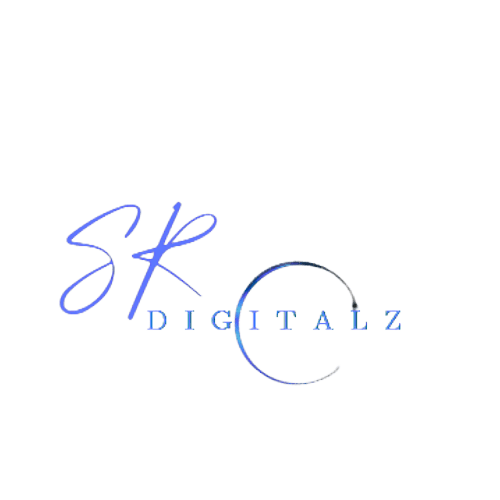Understanding and Utilizing PPC Campaigns for Better ROI in 2024
Pay-Per-Click (PPC) advertising is still a crucial tool for companies trying to boost sales, generate leads, and drive traffic in the cutthroat world of digital marketing. As 2024 approaches, changes in consumer behavior and technological improvements will continue to shape the efficacy of PPC ads. You may improve return on investment (ROI) in 2024 by understanding and utilizing PPC ads with the aid of this thorough guide.

What is PPC Advertising?
With pay-per-click (PPC) advertising, marketers pay a fee each time a user clicks on their advertisement. In essence, it’s a method of purchasing site visitors rather than trying to obtain them naturally. The PPC advertising formats that are most popular include:
- Search advertisements: These show up on search engine results pages (SERPs) when customers look up terms associated with your company. Popular search ad platforms are Google Ads and Bing Ads.
- Display Ads: Banner advertising that shows up on websites that are part of a display network are called display ads. One popular platform for display ads is Google Display Network.
- Social Media Advertising: These advertisements can be seen on Twitter, Facebook, Instagram, LinkedIn, and other social media sites.
- Shopping Ads: Usually employed by e-commerce companies, these are product listings that show up on search engine results pages. One important channel for shopping ads is Google Shopping.
- Video Ads: Video advertisements can be seen on websites like YouTube before, during, or following video content.
Why PPC Matters in 2024
- Instant Results: PPC campaigns have the ability to provide traffic and leads right away, in contrast to SEO, which may take months to produce results. This immediate effect is very helpful for events, marketing, and the introduction of new products.
- Targeted Advertising: PPC advertising enables highly targeted advertising according to keywords, device, location, demographics, and even time of day. The appropriate audience will see your adverts thanks to this exact targeting.
- Measurable Return on Investment (ROI): PPC makes it simple to monitor performance indicators including impressions, clicks, conversions, and ROI. Because of this transparency, you may optimize your campaigns in real time with tweaks.
- Flexibility: PPC programs allow both budget and performance-based scaling, providing marketers with flexibility in their marketing expenditures. Because of its flexibility, PPC may be used by companies of any size.
Key Elements of a Successful PPC Campaign
- Keyword Research:
- Determine Relevant Keywords: To identify keywords that are pertinent to your business, use tools such as Ahrefs, Moz, SEMrush, and Google Keyword Planner. Seek out terms with low to medium competition and strong search traffic.
- Long-Tail Keywords: Pay attention to less competitive and more precise long-tail keywords. Due to their clear intent, these keywords usually target users with greater conversion rates.
- Negative Keywords: To filter out irrelevant traffic, identify negative keywords. If you offer high-end goods, for instance, you might want to avoid using terms like “free” or “cheap.”

- Compelling Ad Copy:
- Attention-Grabbing Headlines: Craft headlines that effectively communicate the value proposition and grab readers’ attention. To make your advertisements stand out, use powerful language, figures, and emotional appeal.
- Interesting and Persistent Descriptions: Make sure your ad descriptions include a clear call-to-action (CTA) and are pertinent to the keywords. To get people to click, emphasize your benefits and unique selling propositions.
- Ad Extensions: To improve ad visibility and offer more information, use ad extensions. Sitelinks, callouts, structured snippets, and location extensions are examples of common ad extensions.
- Landing Page Optimization:
- Relevance: Make sure your landing page offers a seamless user experience and is closely relevant to the advertisement. Conversion rates are increased when landing page content and ad wording are consistent.
- Loading Speed: Make sure your landing page loads quickly. Pages that load slowly may have increased bounce rates and decreased conversion rates.
- Clear CTA: Make sure your landing page has an attention-grabbing call-to-action. Whether it’s purchasing something, subscribing to a newsletter, or completing a contact form, make sure it’s simple for visitors to do the required action.
- Bid Management:
- Manual vs. Automated Bidding: Select between manual and automated bidding techniques in accordance with the objectives of your campaign. While machine learning is used in automated bidding to improve bids for better performance, manual bidding offers you more control.
- Target CPA (Cost Per Acquisition): Aim for your desired cost per acquisition (CPA) by using this automated bidding approach to obtain the most number of conversions at that cost.
- Goal Return on Ad Spend, or ROAS: Give the platform a goal return on ad expenditure and let it optimize your bids to obtain the most money.
- Enhanced CPC (Cost Per Click): With this tactic, your manual bids are adjusted to increase conversions.
- Ad Extensions:
- Sitelink Extensions: Add more links to particular pages on your website, including contact details or product pages.
- Callout Extensions: Emphasize special deals or features, such free shipping or round-the-clock customer service.
- Organized Snippet Extensions: Highlight particular features of your goods or services, such as types, brands, or styles.
Advanced PPC Strategies for Better ROI in 2024
- Utilize AI and Machine Learning:
- Smart Bidding: To take use of machine learning for bid optimization, use smart bidding techniques like target CPA, target ROAS, and maximize conversions.
- Responsive Search Ads: Create responsive search advertisements that use an automated process to test various headline and description combinations and identify the versions that perform the best.
- Audience Insights: Gain insights into the behavior and interests of your audience by using AI-powered solutions. This will allow for more accurate targeting and more individualized ad experiences.

- Audience Targeting:
- Custom Audiences: Build audiences specifically for users of your app, customer lists, and website traffic. Advertise with these target audiences in mind to increase relevancy and interaction.
- Lookalike Audiences: Lookalike audiences can be used to identify new users who have traits in common with your current clientele. This tactic aids in reaching more prospective high-value clients.
- Demographic targeting: To reach the most relevant audience, fine-tune your targeting based on factors like age, gender, income, and education level.
- A/B Testing:
- Ad Variations: Experiment with new headlines, descriptions, graphics, and calls to action (CTAs) on a regular basis. To find out which components work best, conduct A/B testing and make adjustments in response to the findings.
- Testing Landing Pages: Determine which combinations of designs, layouts, and content work best for generating conversions by testing them out.
- Bid techniques: To determine the best course of action for optimizing ROI, experiment with various bidding techniques and budget allocations.
- Remarketing Campaigns:
- Dynamic Remarketing: Display customized advertisements to users based on their previous interactions with your website via dynamic remarketing. By displaying goods or services they have viewed, dynamic remarketing can raise the chance of conversion.
- Sequential Remarketing: Create a series of advertisements that lead consumers through the customer experience as part of sequential remarketing. Ads focusing on awareness should come first, then those focusing on consideration and conversion.
- Exclusion Lists: To save money on advertising, remove users from your retargeting campaigns who have previously converted.
- Leverage Video Ads:
- YouTube advertisements: Use YouTube advertisements to distribute interesting video material to a large audience. Select from a variety of ad formats, including bumper advertisements, discovery ads, and TrueView ads.
- Social Media Video Ads: To draw viewers in and encourage interaction, make videos for websites like Facebook, Instagram, and LinkedIn. Make use of succinct, powerful films that effectively deliver your point.
- Interactive Videos: Try experimenting with interactive video advertisements that let viewers participate directly with the material by giving it their own direction or providing answers to questions.
Measuring PPC Success
Monitoring and evaluating key performance indicators is crucial if you want to make sure your PPC ads are yielding a healthy return on investment (KPI). Among the crucial KPIs to keep an eye on are:
- Click-Through Rate (CTR): The percentage of people that click on your advertisement after seeing it is known as the click-through rate, or CTR. A higher CTR is a sign of well-targeted and written ads.
- Conversion Rate: The percentage of clicks that lead to a desired action (such as a purchase or sign-up) is known as the conversion rate. Increased conversion rates are a sign of successful landing pages and offers.
- Cost Per Click (CPC): The typical price you pay when someone clicks on your advertisement. Your budget can be extended with the aid of lower CPCs.
- Cost Per Acquisition (CPA): The typical price paid to bring on a new client. Reduce your CPA in order to increase ROI.
- Return on Ad Spend (ROAS): Revenue produced for each dollar spent on advertisements is known as return on ad spend, or ROAS. A campaign that has a higher ROAS is more profitable.
- Quality Score: Google advertising uses a metric called Quality Score to evaluate the quality and relevancy of your landing pages, keywords, and advertising. Better ad placements and cheaper CPCs are possible outcomes of a higher Quality Score.
FAQs
Q1: How do I choose the right keywords for my PPC campaign?
A1: Utilize resources such as Google Keyword Planner to examine search volume, competition, and cost after compiling a long list of pertinent phrases. Choose less competitive long-tail keywords to improve return on investment.
Q2: What is the best bidding strategy for PPC campaigns?
A2: The objectives of your campaign determine the optimal bidding approach. Use target ROAS for e-commerce, target CPA for lead generation, and maximize clicks for ads that are traffic-focused.
Q3: How often should I monitor and adjust my PPC campaigns?
A3: It is essential to monitor regularly. Make changes to your campaigns depending on performance data, and check them at least once a week. Monitoring may need to occur more frequently for campaigns with large budgets.
Q4: Can I run PPC campaigns on a small budget?
A4: PPC is indeed scalable. Begin with a modest budget, fine-tune your initiatives, and then progressively up your expenditures as you start to see results.
Q5: How important are landing pages in PPC campaigns?
A5:Incredibly significant. Enhancing your landing page’s optimization can raise conversion rates considerably. Make sure your landing page loads quickly, has a clear conversion route, and is pertinent to the advertisement.
Q6: What is remarketing, and why is it important?
A6: Remarketing is the practice of displaying advertisements to those who have already interacted with your brand or visited your website. It’s crucial since it raises the likelihood of conversion by re-engaging potential clients who might not have converted on their first visit.
Q7: How do I improve my Quality Score in Google Ads?
A7: Make sure your landing pages are optimized, your ad copy is relevant, and you use the right keywords if you want to raise your Quality Score. Make sure the user experience and intent of your adverts are in sync.
Q8: Can PPC be used for brand awareness?
A8: Indeed, by focusing on a larger audience and broad keywords, PPC may be utilized to increase brand awareness. The best kind of advertisements to increase brand familiarity and visibility are display and video ads.
Q9: How do I handle competition in PPC bidding?
A9: Using long-tail keywords, varying your ad wording, and raising your Quality Score are the best ways to combat competition in PPC bidding. To improve your bids based on performance data, think about utilizing automated bidding processes.
Q10: What role do ad extensions play in PPC campaigns?
A10: Ad extensions boost the exposure of your adverts and offer more information. By giving consumers more chances to engage with your advertisement, they can raise the CTR and performance of your advertisement as a whole.
Conclusion
PPC advertising will still be a vital component of successful digital marketing plans in 2024. Through comprehension of the principles and application of sophisticated tactics, companies might optimize their return on investment and attain noteworthy expansion. Maintaining an advantage in the highly competitive PPC market will require consistent monitoring, optimization, and utilization of cutting-edge tools and technology. Accept the power of PPC and observe as your company soars to new heights online.
Digital marketers should make sure their PPC campaigns are well-optimized for greater return on investment in 2024 by implementing these best practices and keeping up with the most recent developments.







